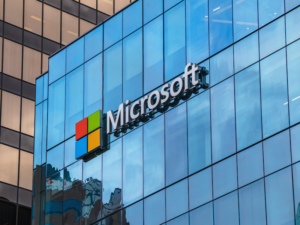TL;DR:
- On-premises infrastructure still holds value despite the rise of cloud computing
- Perpetual licenses are not outdated, with many workloads being brought back from the cloud to on-premises data centers
- Cloud repatriation is a growing trend, driven by factors such as cost, security, and data sovereignty
- Hybrid cloud strategies are becoming increasingly popular, offering a balance between cloud scalability and on-premises control
Cloud repatriation on the rise
The notion that cloud computing would eventually replace on-premises infrastructure has been a topic of discussion in the IT industry for years. However, recent trends suggest that on-premises infrastructure is not going away anytime soon. In fact, many organizations are bringing their workloads back from the cloud to on-premises data centers, a phenomenon known as cloud repatriation.
According to a report by Campus Technology, AWS has stated that it faces competition from on-premises IT, and that the perception that once customers move to the cloud, they never return to on-premises is not correct [^1]. This shift is driven by various factors, including cost, security, and data sovereignty. For instance, Navisite notes that certain compute workloads are bound by specific compliance and latency requirements that public cloud providers cannot meet [^2].
Another key driver of cloud repatriation is the issue of vendor lock-in. As organizations become increasingly dependent on cloud providers, they may find it difficult to migrate to a different provider or bring their workloads back on-premises. This can lead to a loss of control and flexibility, making it harder for organizations to adapt to changing business needs. ERP Today highlights the challenges of achieving identicality between on-premises and cloud environments, which can make it difficult for cloud vendors to provide a seamless experience for customers [^3].
Hybrid rather than either/or
In light of these challenges, hybrid cloud strategies are becoming increasingly popular. By combining the benefits of on-premises infrastructure with the scalability of cloud computing, organizations can create a more flexible and adaptable IT environment. Biztory notes that on-premises infrastructure offers unparalleled control and customization, while cloud computing provides a pay-as-you-go model that can reduce upfront costs [^4].
As the IT landscape continues to evolve, it is clear that on-premises infrastructure will play a significant role in the future of computing. Whether through cloud repatriation or hybrid cloud strategies, organizations are recognizing the value of having control over their IT environment. As OpenLegacy puts it, “the cloud is winning, but it is coming to on-premises” [^5].
Conclusion
In conclusion, the trend of cloud repatriation and the growing popularity of hybrid cloud strategies demonstrate that on-premises infrastructure is not going away anytime soon. As organizations navigate the complexities of IT, they are recognizing the value of having control over their environment and the benefits of combining on-premises infrastructure with cloud computing.
References
[^1]: Campus Technology (2024). “Are Organizations Moving from Cloud to On-Premises?“. Campus Technology. Retrieved 2024-12-01.
[^2]: Navisite (2021). “Can’t Move to the Public Cloud? Then the Cloud Will Come to You“. Navisite. Retrieved 2024-12-01.
[^3]: ERP Today (2023). “Cloud vendors can’t ditch on-prem: It’s a love/hate relationship“. ERP Today. Retrieved 2024-12-01.
[^4]: Biztory (2025). “On-Premise vs The Cloud: What you need to know“. Biztory. Retrieved 2024-12-01.
[^5]: OpenLegacy (2024). “On-Premise vs. Cloud: Understanding the Differences“. OpenLegacy. Retrieved 2024-12-01.



